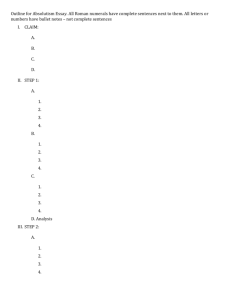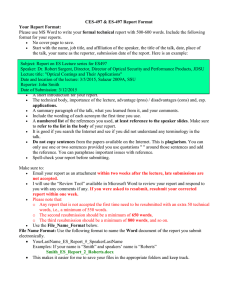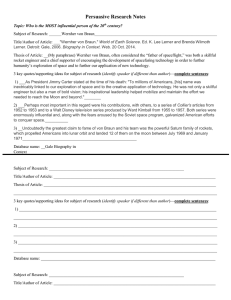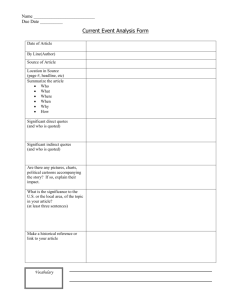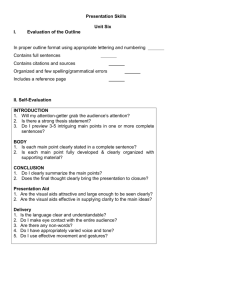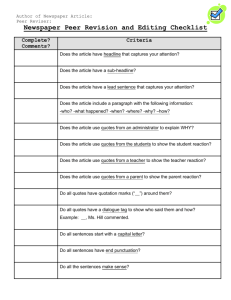Chapter 10 - Ranger College
advertisement
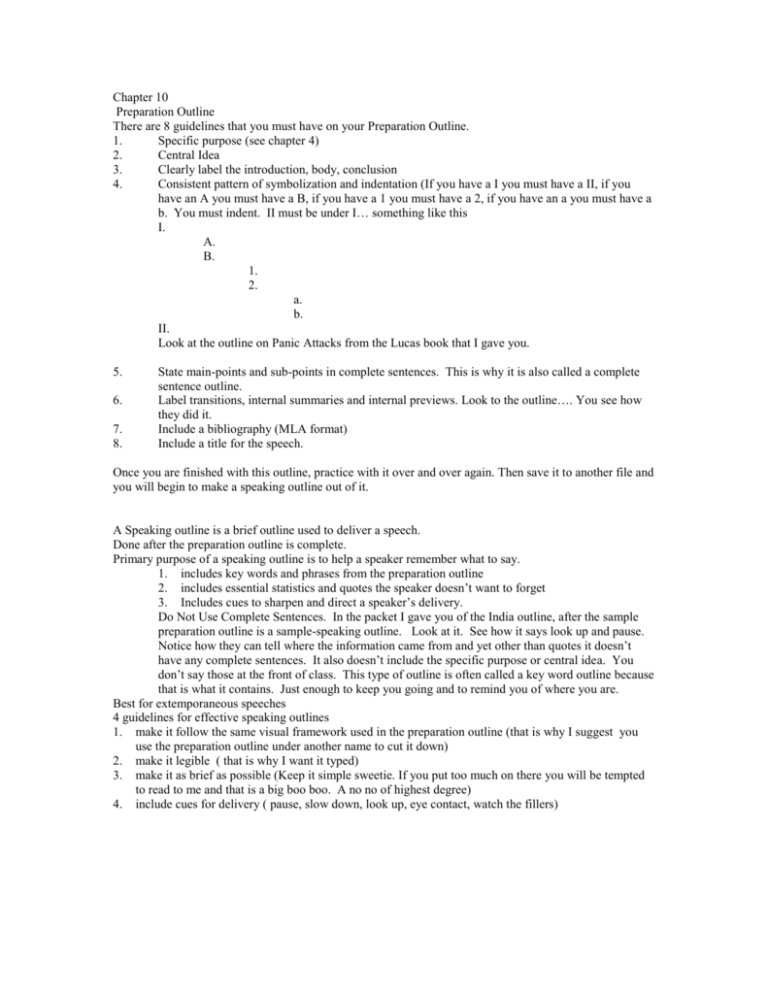
Chapter 10 Preparation Outline There are 8 guidelines that you must have on your Preparation Outline. 1. Specific purpose (see chapter 4) 2. Central Idea 3. Clearly label the introduction, body, conclusion 4. Consistent pattern of symbolization and indentation (If you have a I you must have a II, if you have an A you must have a B, if you have a 1 you must have a 2, if you have an a you must have a b. You must indent. II must be under I… something like this I. A. B. 1. 2. a. b. II. Look at the outline on Panic Attacks from the Lucas book that I gave you. 5. 6. 7. 8. State main-points and sub-points in complete sentences. This is why it is also called a complete sentence outline. Label transitions, internal summaries and internal previews. Look to the outline…. You see how they did it. Include a bibliography (MLA format) Include a title for the speech. Once you are finished with this outline, practice with it over and over again. Then save it to another file and you will begin to make a speaking outline out of it. A Speaking outline is a brief outline used to deliver a speech. Done after the preparation outline is complete. Primary purpose of a speaking outline is to help a speaker remember what to say. 1. includes key words and phrases from the preparation outline 2. includes essential statistics and quotes the speaker doesn’t want to forget 3. Includes cues to sharpen and direct a speaker’s delivery. Do Not Use Complete Sentences. In the packet I gave you of the India outline, after the sample preparation outline is a sample-speaking outline. Look at it. See how it says look up and pause. Notice how they can tell where the information came from and yet other than quotes it doesn’t have any complete sentences. It also doesn’t include the specific purpose or central idea. You don’t say those at the front of class. This type of outline is often called a key word outline because that is what it contains. Just enough to keep you going and to remind you of where you are. Best for extemporaneous speeches 4 guidelines for effective speaking outlines 1. make it follow the same visual framework used in the preparation outline (that is why I suggest you use the preparation outline under another name to cut it down) 2. make it legible ( that is why I want it typed) 3. make it as brief as possible (Keep it simple sweetie. If you put too much on there you will be tempted to read to me and that is a big boo boo. A no no of highest degree) 4. include cues for delivery ( pause, slow down, look up, eye contact, watch the fillers)
